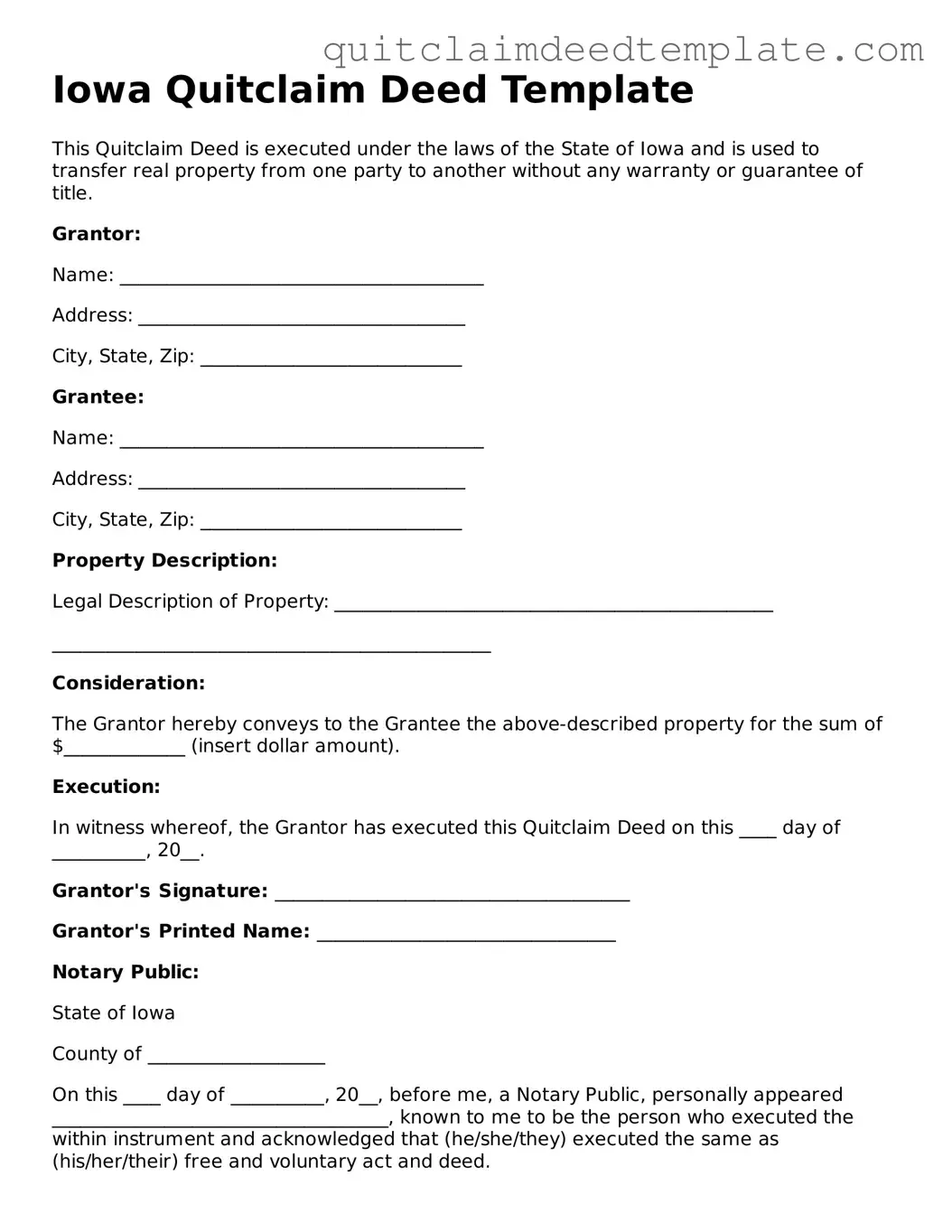Documents used along the form
When preparing a Quitclaim Deed in Iowa, several other forms and documents may be necessary to ensure a smooth transaction. These documents serve various purposes, from establishing ownership to facilitating the transfer process. Below is a list of common forms used alongside the Quitclaim Deed.
- Warranty Deed: This document provides a guarantee that the seller has clear title to the property and has the right to sell it. It offers more protection than a quitclaim deed.
- Property Transfer Tax Form: This form is required to report the transfer of property for tax purposes. It typically includes details about the sale price and property description.
- Affidavit of Title: This sworn statement confirms the seller’s ownership of the property and discloses any liens or encumbrances that may exist.
- Title Insurance Policy: This insurance protects the buyer from any future claims against the property’s title. It is often recommended during real estate transactions.
- Real Estate Purchase Agreement: This contract outlines the terms of the sale between the buyer and seller, including price, payment method, and closing date.
- Closing Statement: Also known as a HUD-1, this document summarizes the financial aspects of the transaction, including fees, costs, and the final amount due at closing.
- Power of Attorney: This document allows one person to act on behalf of another in legal matters, including signing property documents if the owner cannot be present.
- Notice of Transfer: This form notifies local authorities of the property transfer, ensuring that tax records are updated accordingly.
- Homestead Declaration: This document may be filed to claim a homestead exemption, reducing property taxes for primary residences.
Using the appropriate forms and documents alongside the Iowa Quitclaim Deed can help streamline the property transfer process. Each document plays a vital role in ensuring that all legal requirements are met and that the interests of both parties are protected.
